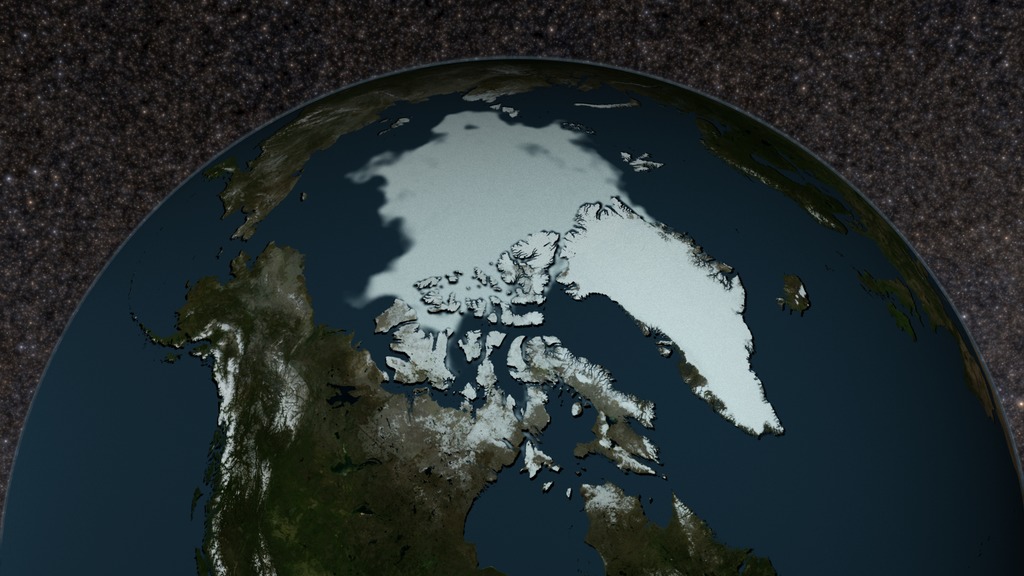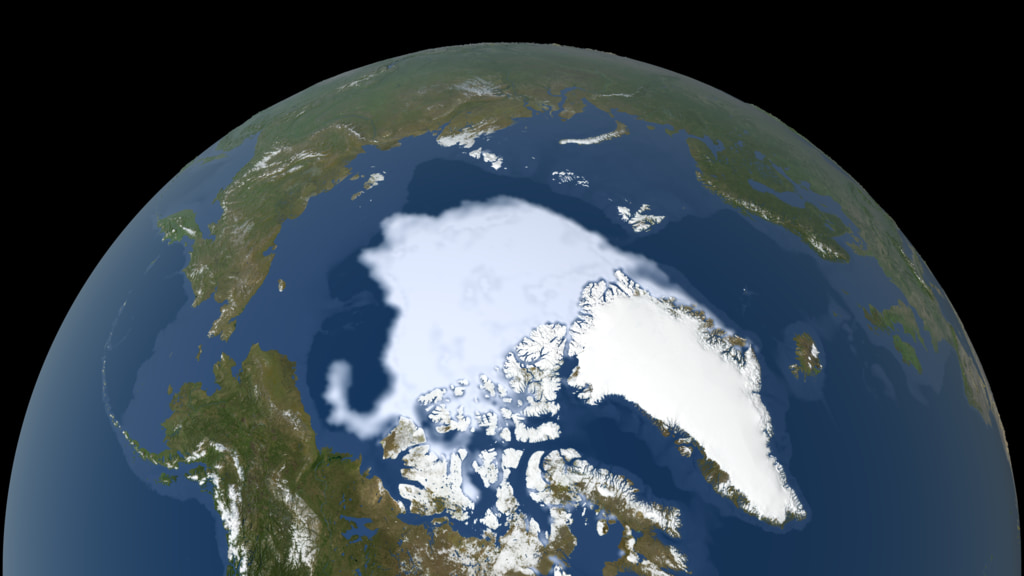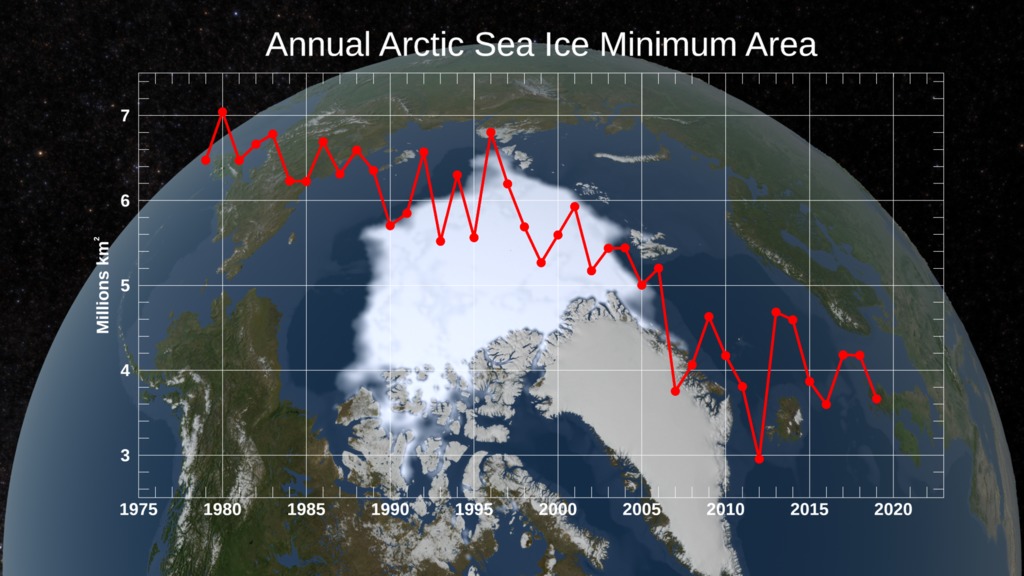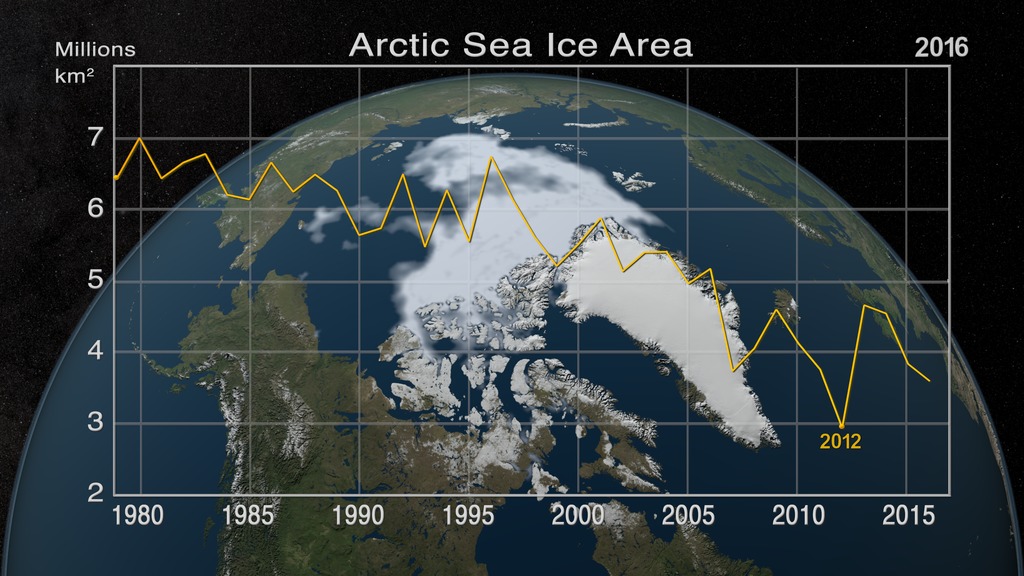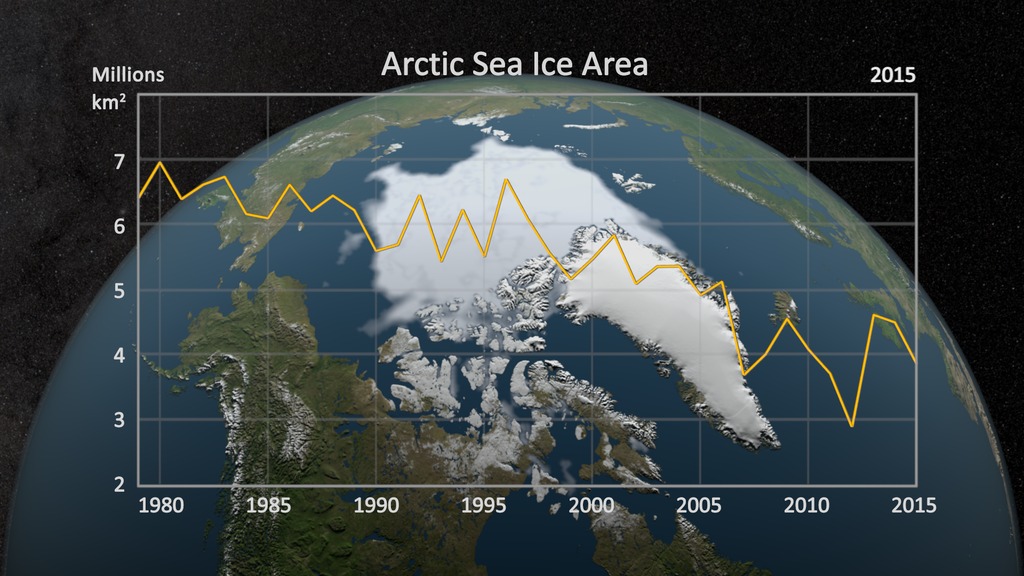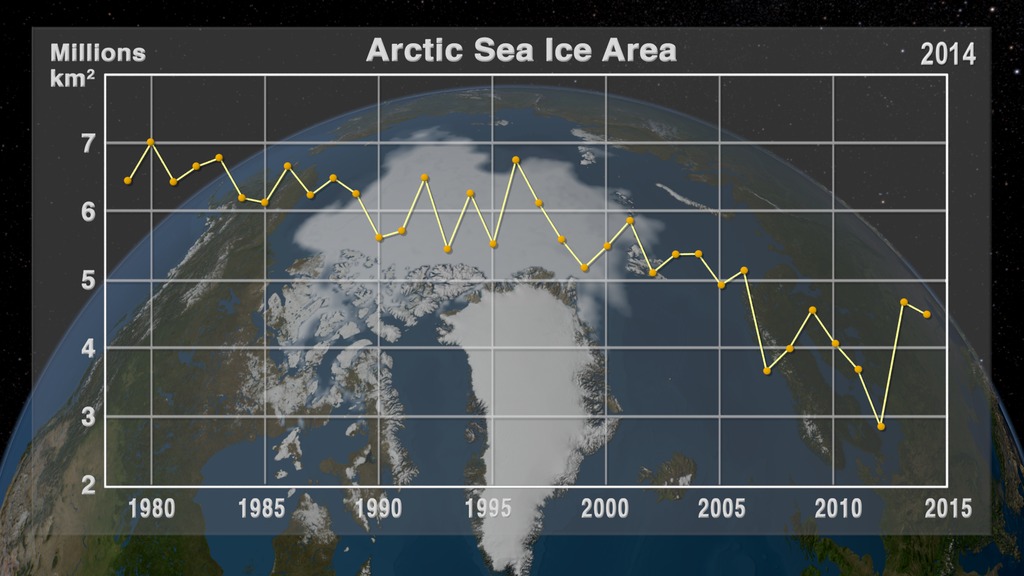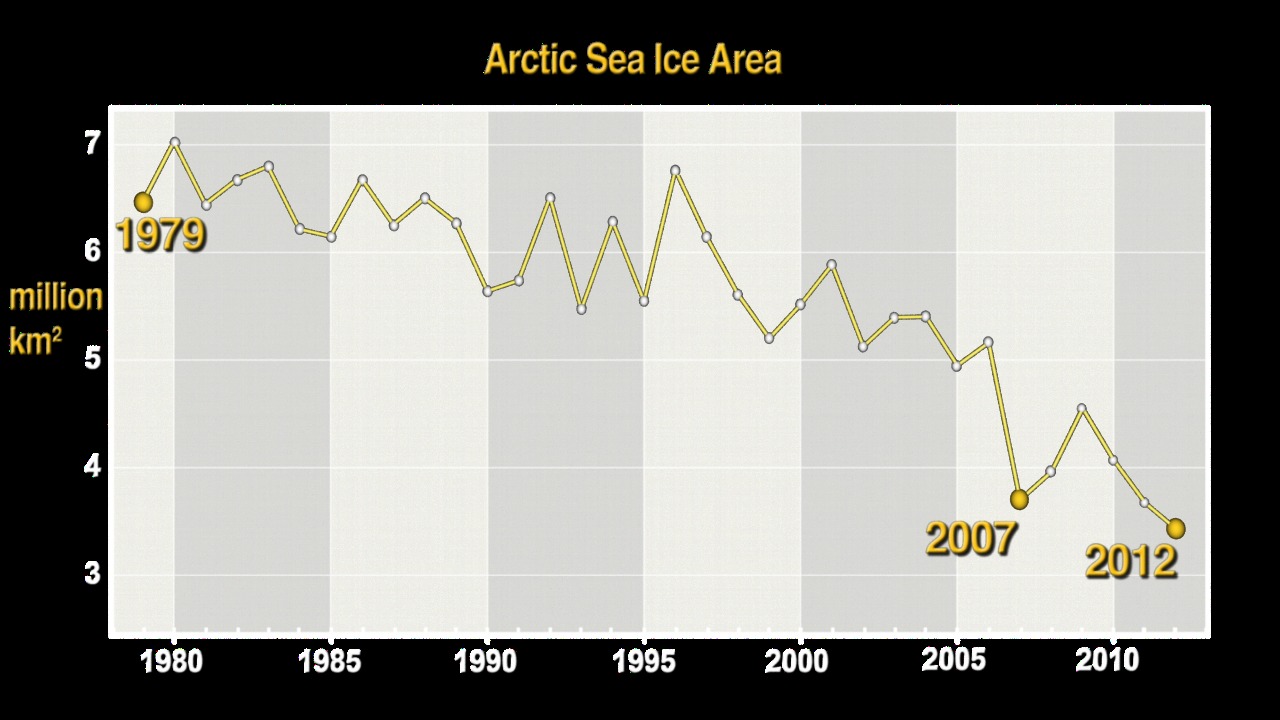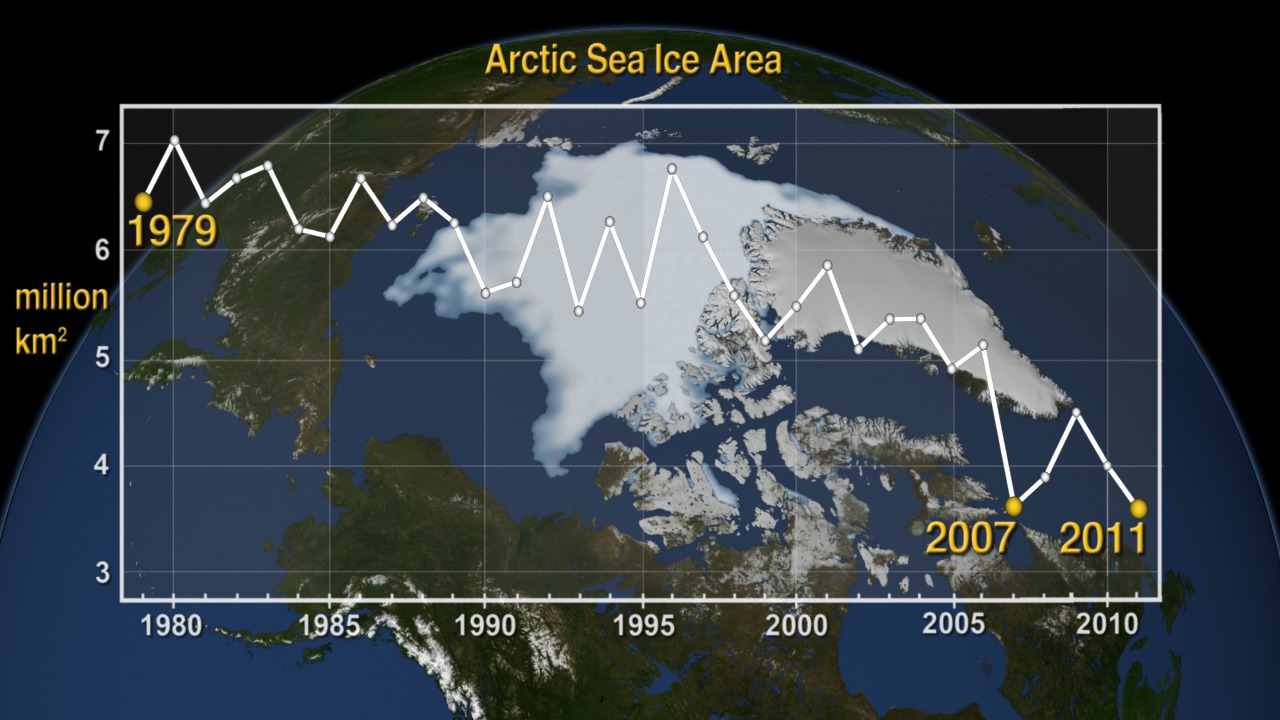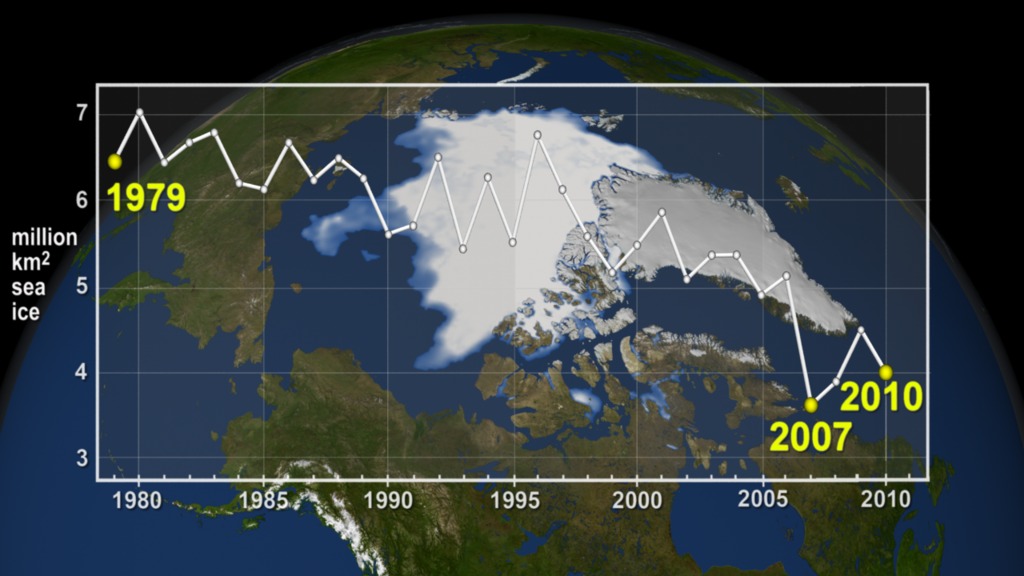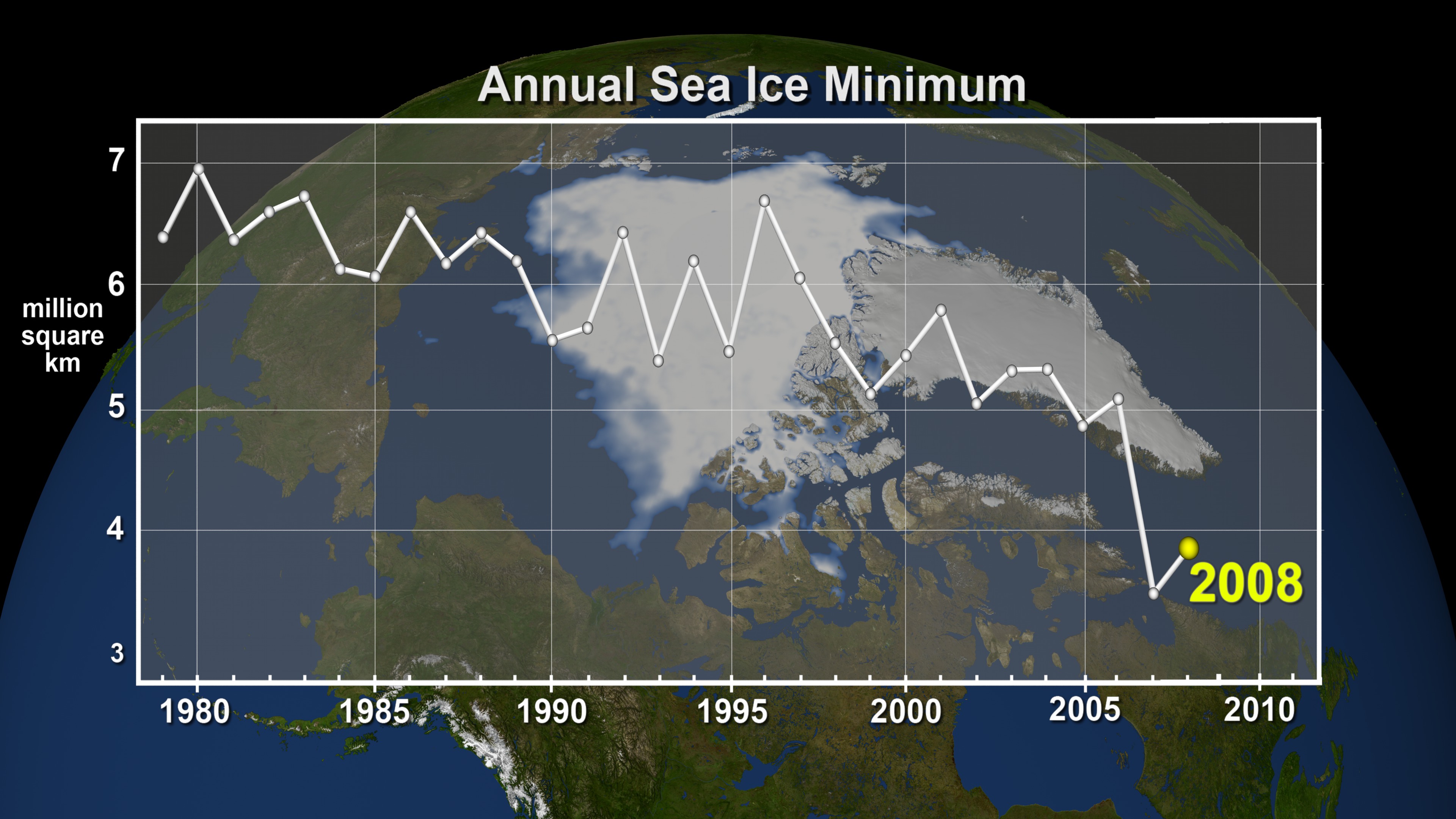Annual Arctic Sea Ice Minimum Area 1979-2022, With Graph
Arctic sea ice minimum area 1979-2022, with graph
Satellite-based passive microwave images of the sea ice have provided a reliable tool for continuously monitoring changes in the Arctic ice since 1979. Every summer the Arctic ice cap melts down to what scientists call its "minimum" before colder weather begins to cause ice cover to increase. This graph displays the area of the minimum sea ice coverage each year from 1979 through 2022. In 2022, the Arctic minimum sea ice covered an area of 4.16 million square kilometers (1.6 million square miles).
This visualization shows the expanse of the annual minimum Arctic sea ice for each year from 1979 through 2022 as derived from passive microwave data.
Arctic sea ice minimum area 1979-2022, graph only (animation has 5 seconds of lead-in to sync with background)

Arctic sea ice minimum area 1979-2022, by year (each year accessible through dropdown menu)

Arctic sea ice minimum area 1979-2022, by year, no dates (each year accessible through dropdown menu)
Arctic sea ice minimum area 1979-2022, animation, no dates

Arctic sea ice minimum area 1979-2022, by year, dates only (each year accessible through dropdown menu)
Credits
Please give credit for this item to:
NASA/Goddard Space Flight Center Scientific Visualization Studio
The Blue Marble data is courtesy of Reto Stockli (NASA/GSFC).
-
Visualizers
- Trent L. Schindler (USRA)
- Cindy Starr (Global Science and Technology, Inc.)
-
Sr. data analyst
- Robert Gersten (Wyle Information Systems)
-
Technical support
- Laurence Schuler (ADNET Systems, Inc.)
- Ian Jones (ADNET Systems, Inc.)
-
Project support
- Eric Sokolowsky (Global Science and Technology, Inc.)
Release date
This page was originally published on Tuesday, September 27, 2022.
This page was last updated on Monday, July 15, 2024 at 12:09 AM EDT.
Series
This visualization can be found in the following series:Datasets used in this visualization
-
Sea Ice Concentration [DMSP: SSM/I]
ID: 290 -
Comiso's September Minimum Sea Ice Concentration
ID: 540
Note: While we identify the data sets used in these visualizations, we do not store any further details, nor the data sets themselves on our site.


